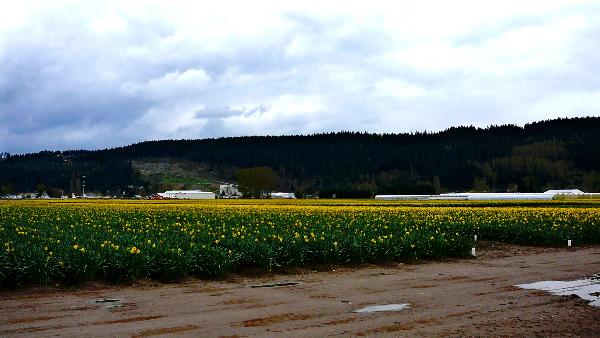
Puyallup Valley Daffodil Fields - Sumner, Washington
Posted by:  Hikenutty
Hikenutty
N 47° 11.481 W 122° 12.495
10T E 559977 N 5226732
The Puyallup Valley is filled with volcanic soil from the last time Mt. Rainier erupted. This soil is perfect for bulb type flowers and is home to many bulb farms, particularly daffodil farms.
Waymark Code: WM1C8D
Location: Washington, United States
Date Posted: 04/01/2007
Views: 298

The Puyallup Valley is filled with volcanic soil from the last time Mt. Rainier erupted. This soil is perfect bulb type flowers and is home to many bulb farms, particularly daffodil farms.
The coordinates above are taken at a grouping of fields near Sumner. Early April is a perfect time to visit. However, there are also some Tulip fields that blossom in late April and early May. In the gallery I've included a picture of a tulip field that will bloom in a few weeks. It's adjacent to the pictured daffodil fields. This is private properties so please do not pick any daffodils. If that isn't enough of a deterrant, there's a large fine for trespassing and stealing off of the property. Picking would be stealing.
The daffodil is so much a part of the valley's history that each year at the end of April there is the Daffodil Parade, a Daffodil Festival and an election of the Daffodil Queen. The parade floats are covered with daffodils and they travel through Puyallup, Sumner, Orting and Tacoma.
Unfortunately, the soil that makes this valley such a great place for bulbs also makes it a dangerous place to live in the event of a volcanic eruption of Mt. Rainier. If Mt. Rainier blows, the town of Orting (next to Sumner) would have 40 minutes to completely evacuate before a 30 foot wall of mud from lahars would bury the town. The whole valley is strewn with warning alarms, and lahar evacuation signs and once a year the town of Puyallup takes part in a full evacuation drill. A lahar is essentially the catastrophic mud and water flow that occurs when a glacier covered volcano erupts. In the case of Mt. St. Helens, it was the lahars, more than the actual eruption that caused the most damage.